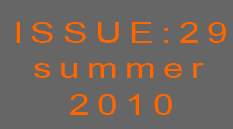
Smart Grids at a nuclear power plant: ensuring power supply for priority consumers with islanding controlled by symmetrical components.
Contributors:
*Frigyes Reisch KTH, Royal Institute of Technology, Nuclear Power Safety Stockholm, Sweden
* European Union, Steering Committee for Smart Grids and Smart Meters, member as the Consumers’ representative.
ec.europa.eu/energy/gas_electricity/smartgrids/taskforce_en.htm
Abstracts
In a three-phase system, when a short circuit between two lines or a single or two lines to earth occurs, three types of currents are immediately produced: positive, negative and zero sequence. Using these signals, less priority consumers can be disconnected from the grid and the power of the nuclear reactor, which supplies all consumers, can be diverted to supply priority consumers, although with only a couple of cycle times due to dwindling amplitude. This is an example of an island operation with a nuclear power reactor and prioritised consumers connected via a smart grid.
Symmetrical components
In a three-phase system when a short circuit between two lines or a single or two lines to earth occurs, it is some times intermittent, not recurrent. Therefore, the lines are not immediately disconnected on the signal of high current and/or low impedance. With this type of short circuit, according to the symmetrical components theory, three types of currents are produced immediately: positive sequence, negative sequence and zero sequence.
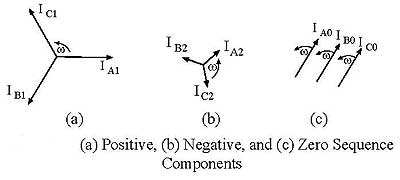
Figure 1, Symmetrical components
A description of the theory is given in standard university text books for electrical engineers. In Figure 2, there is an illustration of these relationships and their possible usages. Of course, should it need to be implemented today, probably computer algorithms would be used instead of mechanical devices.
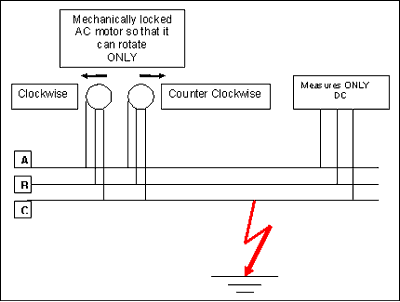
Figure 2, Illustration of the occurence and measurement of symmetrical components
Islanding within a smart grid
Suppose a generator supplies four consumers, 1 – 4. Consumer 1 is the prioritised one. The others are peripheral. A short circuit must not jeopardise the power supply to the priority consumer. So, as soon as a short circuit is indicated at any of the peripheral consumers’ line, all the latter will be immediately disconnected. The fault signals which come first are emanated as symmetrical components. If there is an abnormality in the three-phase system i.e. a negative sequence current and/or a direct current signal can be sensed at one or more peripheral consumer, all low-priority breakers will be opened and a signal will be sent to the nuclear power reactor to reduce the supply to the generator so that its output power corresponds with that of the prioritised consumer. See Figure 3
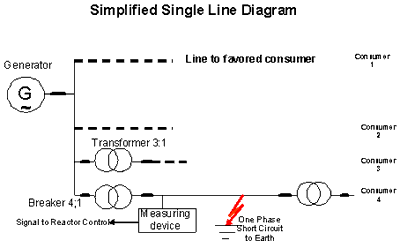
Figure 3, Simplified schematic block diagram; generator, breakers, transformers, measuring devices, transmission lines, short circuit and consumers
Islanding with a nuclear power reactor
Suppose that the generator is supplied by a nuclear power reactor. As soon as there is a negative sequence or DC signal from any of the low priority consumers all low priority consumers are disconnected and a signal is forwarded to the reactor control system to insert the control rods to decrease the nuclear power to the level corresponding to the consumption of the high-priority consumer. Neutron kinetics influence the reactor’s transient behavior. Reactivity inputs steer the kinetics. Besides the control rods there are additional reactivity inputs: from the fuel and the moderator and in a Boiling Water Reactor also from the coolant void. Neutron flux (nuclear power) is converted into thermal power in the reactor and rotational power in the turbine and, finally, into electricity in the generator. See Figure 4
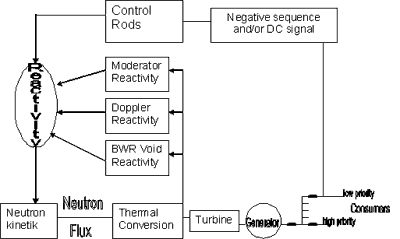
Figure 4, Signal flow and power conversion
Nuclear Reactor
Neutron kinetics govern the reactor’s transient behavior. The reactor kinetics equations with six delayed neutron groups, the fuel and moderator thermal dynamics equations, in the form of Laplace transform with simple time delays and then as first degree differential equations.
Altogether nine coupled differential equations are solved numerically in Reference [1].
In reference [2] there is an example to be use as a model based simulation by applying Matlab’s sister program, Simulink
For this study, instead of differential equations a Simulink model is created and applied for a Pressurised Water Reactor (PWR). The control rod movement is set to a minus 10 pcm step change, to reduce the power to ~70%, that of the consumption of the priority consumer.
The block scheme is illustrated in the Figure 5
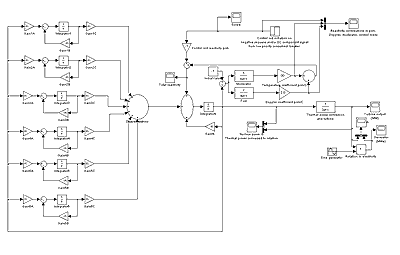
The initial value of both the nuclear and thermal power is 1. Due to the time delay of the thermal process and the inertia of the turbine generator, the thermal and electrical power changes lag behind the nuclear power. The drop in thermal power is much less then that of the nuclear power. The scope connected to the nuclear and thermal power signals gives the picture shown here as Figure 6
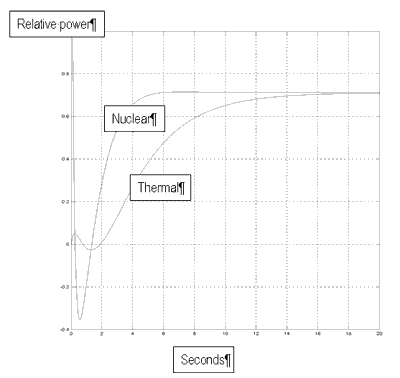
The generator output recovers quickly after a few dwindling cycles. The generator output signal is shown here in Figure 7

Islanding in Smart Grids
A general study of the safety and reliability for smart-, micro- and islanded grids is given in Reference [3]
Summary
This study shows that a nuclear power reactor can be used for islanding to support top priority consumers. Most reactors are tested to ensure that they can be disconnected from the grid and minimise their power for house turbine operation. In practice, however, when a failure occurs in the transmission line from the nuclear power plant the excess current protection system tries a few times to restore the line and the reactor control system cannot cope with the surges and drops in power demand. So the whole process ends with a scramble. Priority consumers loose their power and the reactor must be restarted. A restart is often a time-consuming process. Here an alternative solution has been studied.
References
[1] Calculation of the neutron flux, fuel and moderator temperature transients for Research Reactors, ENSnews April 2008
F. Reisch, Nuclear Power Safety, KTH, Royal Institute of Technology
www.euronuclear.org/e-news/e-news-20/neutron-flux.htm
[2] Taming the Chernobyl Avalanche, ENS NEWS April 2008, Frigyes Reisch,
Nuclear Power Safety, KTH, Royal Institute of Technology
S-10691Stockholm – Sweden
www.euronuclear.org/e-news/e-news-20/chernobyl-avalanche.htm
[3} SAFETY AND RELIABILITY FOR SMART-, MICRO- AND ISLANDED GRIDS
Werner FRIEDL, Lothar FICKERT, Ernst SCHMAUTZER, Clemens OBKIRCHER
Institute of Electrical Power Systems, Graz University of Technology – Austria
(C I R E D 20th International Conference on Electricity Distribution, Prague, 8-11 June 2009)
www.ove.at/akademie/CIRED2009_1061_paper.pdf
|

